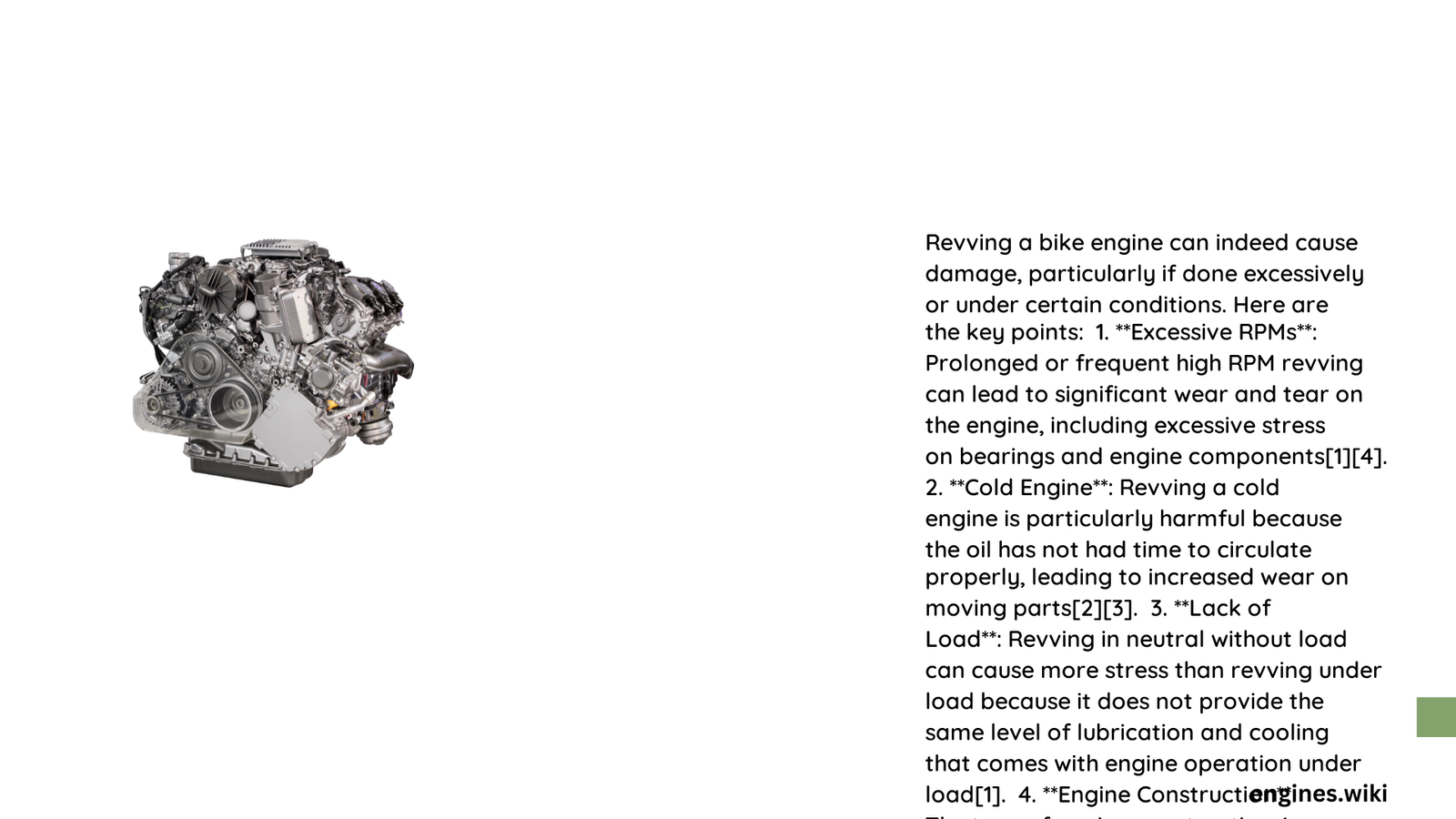Motorcycle enthusiasts often wonder about the potential consequences of revving their bike’s engine. High-performance riding can push engines to their limits, but understanding the delicate balance between performance and mechanical stress is crucial. Excessive revving can lead to significant engine damage, including valve float, piston wear, and potential catastrophic failure, making it essential to understand the nuanced relationship between RPM and engine health.\n\n## What Happens When You Rev a Motorcycle Engine Beyond Its Limits?\n\nMotorcycle engines are precision-engineered machines with specific operational tolerances. Revving beyond recommended RPM ranges can cause multiple types of mechanical stress and potential damage:\n\n### How Do Different Motorcycle Engines Respond to High RPMs?\n\n| Motorcycle Model | Redline RPM | Potential Damage Risk |\n|—————–|————-|———————-|\n| Harley Street Glide | 5,500 RPM | Moderate |\n| Honda CBR | 15,000 RPM | High |\n| Voge 300 DS | 8,500-10,000 RPM | Moderate to High |\n\n### What Are the Primary Mechanical Risks of Over-Revving?\n\n1. Valve Float Consequences\n – Valvetrain components fail to synchronize with camshaft motion\n – Potential piston-valve collision\n – Catastrophic engine damage possible\n\n2. Connecting Rod and Piston Stress\n – Increased mechanical load at high RPMs\n – Risk of component separation\n – Potential complete engine failure\n\n### How Does Temperature Impact Engine Wear During High RPM Operation?\n\nEngine temperature plays a critical role in mechanical stress. Operating an engine at high RPMs before reaching optimal temperature can cause:\n\n- Premature metal component warping\n- Inadequate lubrication\n- Increased friction and wear\n\n### What Maintenance Practices Can Mitigate Revving Risks?\n\n- Follow manufacturer-recommended RPM ranges\n- Allow engine proper warm-up time\n- Conduct regular oil changes\n- Monitor engine temperature during aggressive riding\n\n## Technical Insights into Engine Stress\n\nModern motorcycle engines are designed with specific performance envelopes. The power band—where maximum efficiency occurs—varies between models. For instance, the Voge 300 DS achieves peak power at 8,500 RPM, indicating that consistently operating beyond this point increases mechanical stress.\n\n### Can Continuous High RPM Riding Cause Long-Term Damage?\n\nProlonged exposure to near-redline RPMs can accelerate component wear, specifically:\n\n- Faster piston ring degradation\n- Increased valvetrain component stress\n- Potential reduction in overall engine lifespan\n\n## Expert Recommendations\n\nProfessional mechanics and motorcycle engineers consistently advise:\n\n1. Respect manufacturer-specified RPM limits\n2. Gradually build engine speed\n3. Avoid prolonged high-RPM operation\n4. Perform regular maintenance\n\n### What Should Riders Remember About Engine Revving?\n\nWhile occasional high-RPM operation is normal, consistent over-revving can significantly reduce engine longevity. Understanding your specific motorcycle’s mechanical limits is key to preserving its performance and reliability.\n\n## Conclusion\n\nRevving a motorcycle engine beyond its designed limits can indeed cause substantial damage. Responsible riding, understanding mechanical tolerances, and adhering to manufacturer guidelines are crucial for maintaining optimal engine health.\n\n### Reference:\n- Motorcycle Performance Guide\n- Engine Mechanics Research\n- Professional Motorcycle Maintenance Resources

